More reliable and efficient than traditional heating! New ways to heat homes
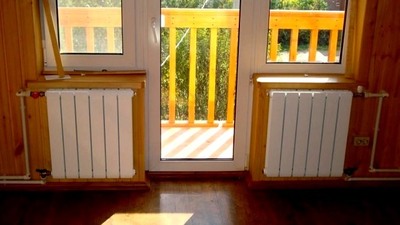
Gas and electric heating systems have been used for a long time and everywhere, but they are being replaced by new ones, based on modern technologies.
Modern heating methods include hydrothermal and geothermal installations, solar panels, infrared radiation, steam heating and others.
Content
What alternative options for heating homes can be suggested?
Alternative heating sources have appeared relatively recently. They differ environmental friendliness and fire safety, and also economy in use.
Hydrothermal system
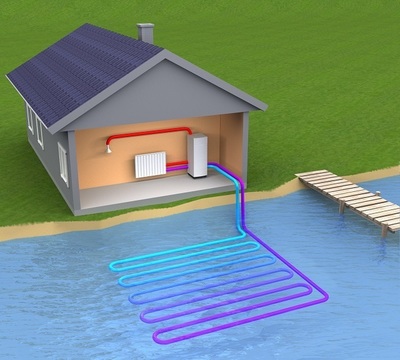
To maintain the heating of the house, the heat of a nearby reservoir is used. It must be deep enough so as not to freeze in winter.
Operating principle
The hydrothermal heating system consists of:
- external contour of pipes;
- internal contour;
- heat pump;
- heat exchanger.
External contour of pipes is placed on the bottom of the reservoir. Internal is located in the house. This is a system of radiators or underfloor heating. There is water or antifreeze in the pipes. With the help of a pump, the coolant is pumped into the heat exchanger. There it cools down, transferring heat to the internal heating system, and returns back.
Important! The water in the internal circuit is heated less than with the traditional method. The temperature is about 50°C instead of 90°. Therefore, when using radiators for heating, their area must be increased.
It is more efficient to combine heating with a warm floor system. In this case, costs are reduced. by about 20%.
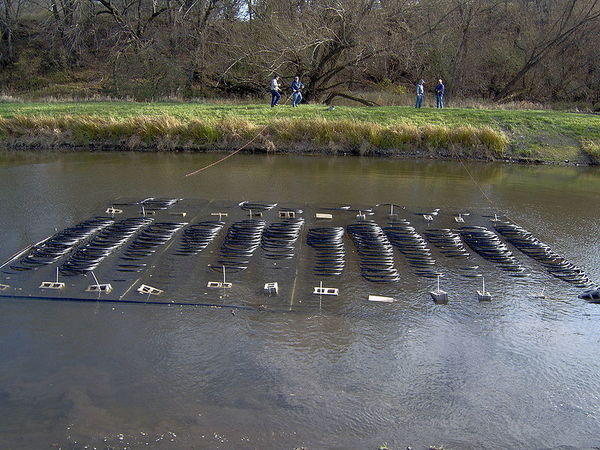
Photo 1. Installation of a hydrothermal unit. Special hoses are placed in the reservoir, with the help of which heat is obtained.
Benefits of heating:
- High efficiency. The heat pump uses up 1000 kW per hour of operation. about 1 kW electricity and generates heat up to 4 kW.
- Fire safety.
- There is no need to store fuel.
- Easy to use.
- In hot weather, the hydrothermal unit can cool the house. That is, it also works as an air conditioner.
- Environmentally friendly. No harmful emissions into the atmosphere.
Disadvantages of heating:
To build such a system, it is necessary, so that there is a body of water near the house. This is not always the case, and the creation of an artificial reservoir will significantly increase costs. In addition, it will require space.
There is one more minus. It is quite significant initial investment: for equipment and installation.
In severe frosts, the efficiency of the complex is noticeably reduced. In addition, electricity is required for operation. If there are interruptions with it, you will have to additionally buy a gasoline or diesel generator. But in this case, it is difficult to talk about complete safety and environmental friendliness.
Geothermal heat sources
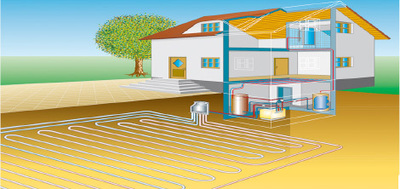
Geothermal home heating is similar to hydrothermal. But it works. due to the heat of the underground depths, and not water.
They are divided into 2 types:
- Vertical. The pipes are buried deep up to 100-150 m. from ground level.
- Horizontal. The pipes are buried only by 5-6 m, but the surface area of the plot is larger.
Reference. Vertical installations take up less space, but are more expensive.
Operating principle
The essence of heating is the same as in the previous method, only the heat source is different. But such a system is more efficient, the maximum heat production is up to 5 kW.
Advantages of geothermal heating:
- environmental friendliness;
- efficiency;
- safety;
- simplicity and ease of use;
- there is no need for a reservoir.
Disadvantages of geothermal heating:
The main disadvantage of heating is the high cost of the device. Before starting work, it is recommended to calculate whether these costs will pay off in the foreseeable future.
What information can be found about solar panels
Batteries convert solar heat into electrical energy. It is stored in special batteries and then transmitted to devices through converters.
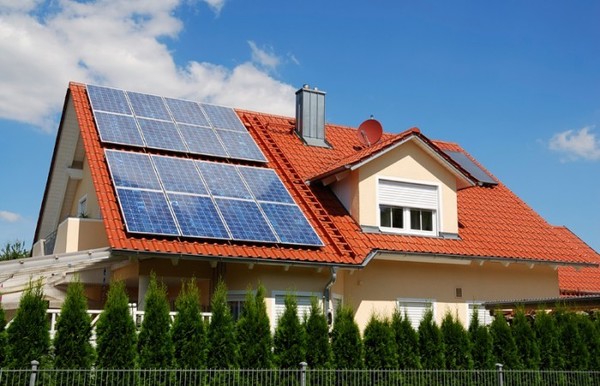
Photo 2. Solar collectors installed on the roof of the house. The devices convert the sun's heat into electricity.
If desired, energy is spent not only for heating the house, but also for other needs.
Important! A heating system that works entirely on sunlight should only be installed in southern regions. In other regions, it will not be enough, so you will need hybrid complex using another source.
Operating principle
The solar battery is a plate made up of individual silicon cells. They are covered with glass on top. These cells generate direct current with a voltage of 12V or 24V. Electricity is supplied to batteries or directly to devices that operate on direct current.
Reference. For efficient operation of the heating system, batteries are equipped with at an angle of 30-45° to the horizon.
Advantages:
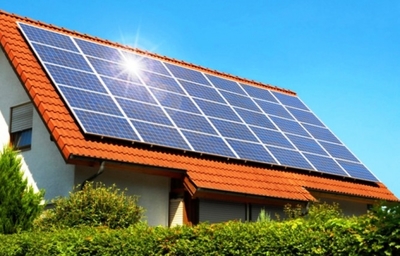
- noiselessness;
- environmental friendliness and safety;
- low operating costs.
Flaws:
- inconsistency of production;
- high cost of equipment;
- low power density, that is, the amount of energy that can be obtained from a unit area.
Infrared installation
Infrared heaters are suitable for both general heating and additional heating of individual zones. By type they are divided into:
- reflectors;
- panels;
- films.
Infrared radiation is used and for installing underfloor heating.
Operating principle
Such a heater emits energy in the infrared range. The outgoing rays heat the surfaces they are directed at: walls, floors, objects. And from them the air is heated.
Advantages of infrared heating:
- High efficiency. The efficiency is about 95%Moreover, it does not decrease during frosts.
- Versatility. It is used to heat both the entire house and a separate room or part of it.
- Fast heating. This is especially convenient for a summer house where people do not live permanently.
- The equipment is easy to install. It is also possible to connect independently.
- Low consumption energy.
- No space required for equipment and fuel.
- Safety and environmental friendliness. No harmful substances are released and the air in the room does not dry out.
- No noise during operation.
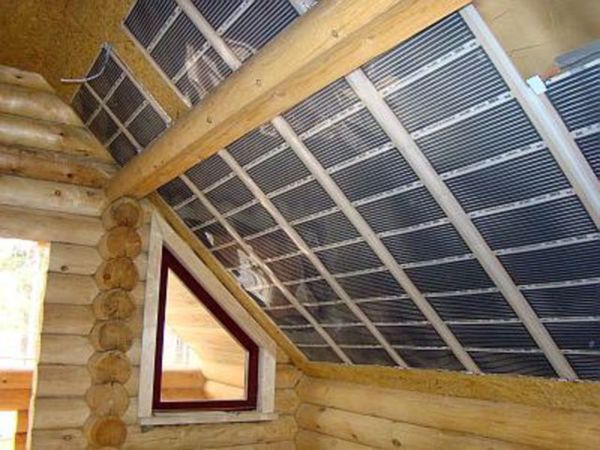
Photo 3. Infrared heaters installed on the inside of the roof of a private house.
Disadvantages of infrared heating:
Before installing a heating system, it is necessary to draw up a project, taking into account the distribution of heat in the room. If the exposure is too strong, there is a risk of overheating, dry skin and even burning.
Staying directly under a working heater for a long time quite uncomfortable. Therefore, it is not advisable to place them above recreation areas and work places.
How to heat a private house using steam
Steam heating is similar to the more common water heating. But the liquid is heated to the state of steam, sopipes of smaller diameter are used.
Attention! Radiators and supply pipes get very hot (up to 100°C). To avoid getting burned by accidental contact, batteries are covered with protective screens.
This type of heating system can be:
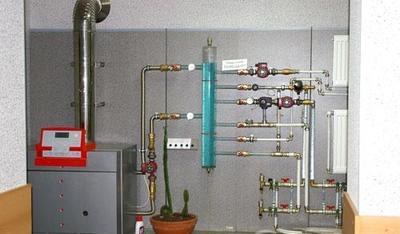
- Single-circuit, if it only works for heating.
- Double-circuit, if it also heats water for domestic needs.
Steam heating is also divided into:
- NaturalThe coolant moves independently.
- ForcedA pump is used to move the coolant.
Operating principle
To heat water to steam, a boiler or sometimes a stove is used. In this case, the following are burned:
- firewood;
- coal;
- gas;
- peat;
- diesel fuel;
- petrol;
- etc.
The steam passes through the tubes to the radiators. There it cools, condenses and comes back in the form of water.
Attention! They are being mounted only metal pipes (copper, stainless steel, galvanized, etc.). Plastic ones are not able to withstand such high temperatures.
Advantages of steam heating:
- high efficiency;
- ability to work on different energy sources;
- relatively low cost of equipment.
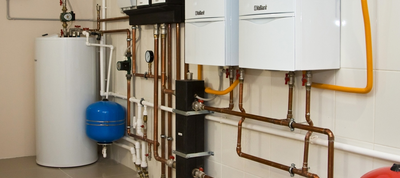
Disadvantages of steam heating:
- Quite a high risk of burns.
- The probability of an accident with steam escaping from the pipes.
- It is difficult to regulate the temperature.
Types of solid fuel heating, use of coal
The heater operates using solid fuels:
- firewood;
- coal;
- fuel briquettes;
- peat;
- etc.
Which of these options would you prefer? Depends on the region. The cost and availability of fuel varies between them.
Operating principle
When fuel burns in a boiler, thermal energy is generated. It heats up water (or non-freezing liquid), which through pipes it flows to the radiators.
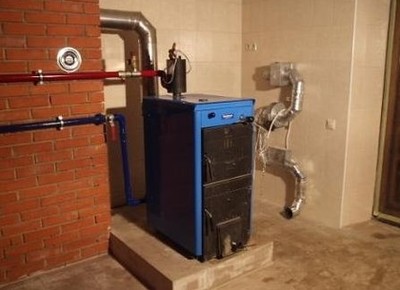
The cooled coolant returns back to the boiler.
By type, heating boilers are divided into:
- classic (regular);
- pyrolysis (more economical);
- automatic.
The latter do not require manual fuel loading.
They provide stable heating. The efficiency of work reaches up to 85%, while for other types of boilers it is about 70-80%.
Reference. To maintain a constant temperature, install heat accumulators. These are large water tanks. They absorb heat when the boiler is running and then release it over a long period of time.
Advantages:
- There are usually no problems with fuel.
- Greater safety than liquid options.
- A small amount of ash is formed, so it has to be removed less often than from a stove.
- Most types of boilers do not require an additional power source to operate. The house will be warm even without electricity.
Flaws:
- Not the highest efficiency.
- Difficulty in regulating the combustion process.
- Additional loading is required (except for autonomous boilers).
Of all the types of solid fuel, coal is the most effective. It does not require special storage conditions.
Attention! Using coal increases risk of carbon monoxide poisoning. Therefore, it is essential to install leak sensors.
Diesel heating
There are also boilers that run on liquid fuel.: gas and diesel. Diesel boilers are quite economical in operation. For their installation no need to obtain permission. Diesel units do not require constant supervision, so they are suitable for automatic operation.
Useful video
Watch a video that talks about options for heating private homes and heating costs.
Application of new technologies in heating
Technologies that have appeared recently are used, among other things, for heating private homes. Each of them has its own advantages and disadvantages. Entire heating systems are being developed that take into account the features of each home. Sometimes they are created based on a combination of several heating methods.








